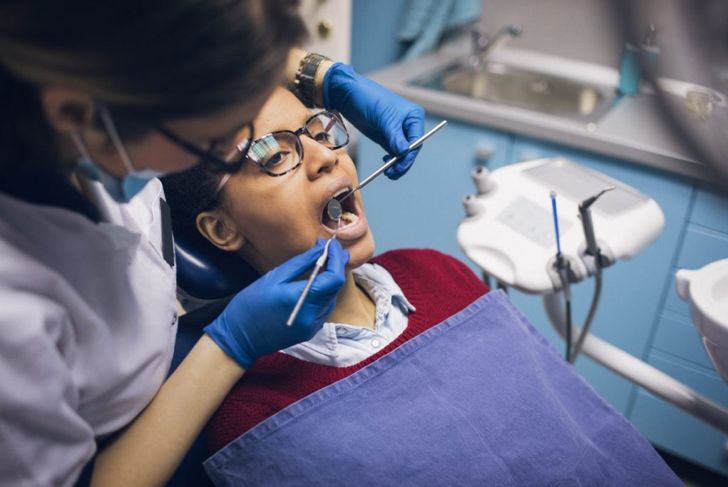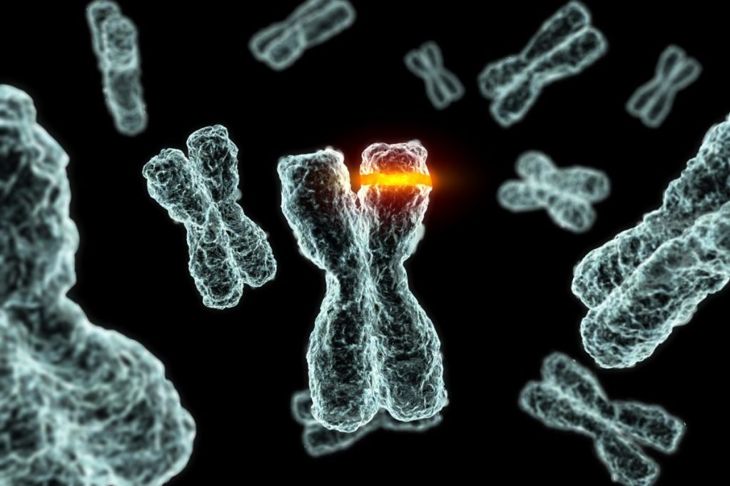First identified in 1827, ameloblastomas develop from the remnants of the epithelium or dental enamel. These tumors develop outside the bone, and can overtake the jaw and the tissue around it, including the tongue. In addition to causing tooth displacement, they can produce osteoclasts and make chewing difficult. Although a majority of these abnormal tissue growths are benign, these tumors can grow aggressively, causing facial asymmetry and impeding the functionality of surrounding tissues and organs. Ameloblastomas account for 11 percent of odontogenic tumors (jaw cysts) and 1 percent of all head and neck tumors.
Who is Affected?
The average age range for people affected by ameloblastomas is 30 to 40. Reports suggest maxillary — upper jaw — ameloblastomas tend to occur in older individuals, while other types more commonly develop in younger people. Some studies search for ethnic or racial components, due to claims that black and Asian populations experience increased occurrences.
Causes
While researchers have yet to identify a definitive cause for ameloblastomas, they have some theories. Experts believe impacted or unerupted teeth could cause various oral cysts and tumors. Additionally, some studies are investigating the link between tumors and increasing incidences of one type of HPV. Another study suggests low levels of the gene p53, a protein that suppresses tumors by regulating the cell cycle, could also be a factor.
Signs and Symptoms
Individuals with ameloblastoma are typically asymptomatic, but some experience symptoms they initially associate with other conditions. They may have loose teeth, intermittent or continuous bone pain, or lacerations of the inner lining of the cheek. Some experience an unexplained burning feeling in the mouth. Depending on how aggressive the tumor is, painless swelling of the jaw may grow to a life-threatening crisis, obstructing breathing when it invades the nasal and oral airways.
Diagnosis
A dentist can diagnose an ameloblastoma, but this diagnosis is usually reached after treatments for other similar conditions have failed. The doctor may prescribe first antibiotics for pain and swelling in the jaw. When that provides no relief, an X-ray can investigate the symptoms. A bone biopsy comes at a later stage to help the doctor determine the exact cause. The earlier the ameloblastoma is caught, the easier it is to treat.
Desmoplastic Ameloblastoma
Desmoplastic ameloblastoma is one type of tumor. Worldwide, there are fewer than 200 reported cases of this variety, though it is easily misdiagnosed despite being distinctive. Desmoplastic ameloblastomas infiltrate the tooth-bearing region and the alveolar, the bony ridge of the upper teeth, causing small nests of tumors. Most doctors opt to excise the tissue to treat this type of growth.
Multicystic and Unicystic Ameloblastomas
Multicystic tumors are locally aggressive and may become life-threatening if they obstruct vital tissues and organs such as the nasal and oral airways. By contrast, a unicystic ameloblastoma is a slow-growing mass that primarily affects the back of the mandible. Multicystic account for 85 percent of all ameloblastomas, while unicystic make up approximately 10 to 12 percent of cases.
Extraosseous Ameloblastoma
Extraosseous ameloblastoma develop on the gingiva, the connective tissue fiber that holds the teeth in place. They appear as smooth, raised nodules. Because there is no bone involved in this tumor, excision is the best option. This type of ameloblastoma accounts for approximately 1 to 2 percent of all cases and has a maximum recurrence rate of 10 percent.
Gorlin-Goltz Syndrome
Nevoid basal cell carcinoma syndrome, NBCCS or Gorlin-Goltz syndrome is the result of a gene mutation and causes defects in multiple systems including the bones. Gorlin-Goltz syndrome leads to frequent jaw cysts and less frequent ameloblastomas. A twenty-year study showed significant overlap of basal cell carcinomas and the development of odontogenic tumors. As a result, doctors are researching the possibility that ameloblastomas could be a criterion for identifying those at risk of NBCCS.
Ameloblastic Fibroma vs. Ameloblastoma
Sometimes, ameloblastic fibroma is confused with ameloblastoma. Fibroma typically occur in younger adults between the ages of 15 and 25, while most ameloblastomas happen during later years. Ameloblastic fibromas are less invasive, and they’re usually smaller than ameloblastomas, millimeters rather than centimeters or larger. The link between the two comes from scientific evidence that ameloblastic fibromas can become ameloblastomas if there is specific tissue formation. The only cure for an ameloblastic fibroma is surgery.
Treatment
There are two surgical categories for ameloblastoma treatment: conservative and radical. Conservative treatments include curettage — removal of the tumor followed by removal of some bone to prevent recurrence. Radical treatments include segmental resection of the mass and tissue around it, such as organs and glands. Studies show the conservative approach results in six times more recurrences than radical treatment. In cases where the tumor is inoperable, has caused significant damage to the jaw or soft tissues, repeatedly recurs, or is malignant, radiotherapy is also an option.

 Home
Home Health
Health Diet & Nutrition
Diet & Nutrition Living Well
Living Well More
More




















